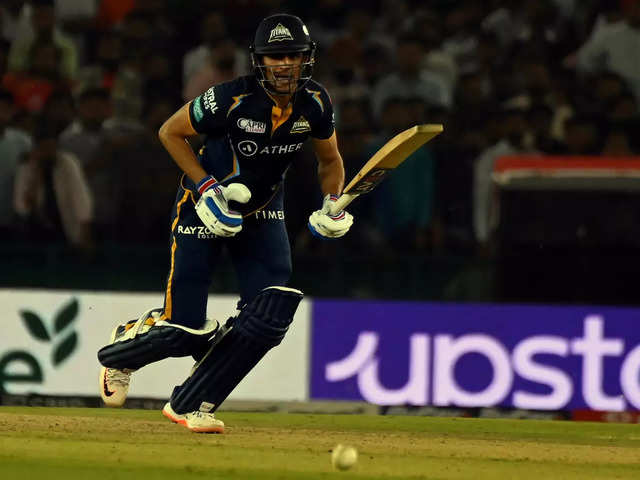
Representational imageUnsplash
The online gaming segment in India estimated at Rs 136 billion in FY21
Jun 17, 2021, 15:38 IST
ad-tech
Advertising revenues in the casual gaming segment aggregated Rs 36 billion in FY21 and is expected to grow at a CAGR of ~29% to Rs 99 billion by FY25: KPMG Report
Jun 17, 2021, 15:38 IST
The online gaming segment in India estimated at Rs 136 billion in FY21
- Online casual gaming to be the largest sub-segment amongst the online gaming segment in India, contributing ~58% to the overall revenues by FY25.
- Growth to be led by a continued increase in consumption, robust brand interest and maturity of the Indian gamer in terms of consumer spends.
Gamers across demographics took to online gaming as a means to connect with family and friends, with the supply side also playing its part, in terms of multiple titles getting multiplayer features, with a social layer to them, to encourage group consumption. With India experiencing a second wave of the COVID-19 pandemic currently, it is envisaged that the consumption of online casual gaming is likely to continue being robust, helped by the robust digital infrastructure that India has, and the continued investments by Indian and global developers and publishers in making world class games available to the Indian gamer.
In order to decode the casual gaming market in India, its constituents and deep dive into what the future holds for this sub-segment,
Additionally, it also places a specific emphasis on outlining the understanding of the monetisation models around both advertising and consumer spends, and how India’s movement up the casual gaming maturity curve is likely to help in improved monetisation across the board. It also highlights, the emerging phenomenon of rewarded advertisements as a means to strike a balance between monetisation and game experience, as advertisement revenues remain a unique feature to the Indian online casual gaming sub-segment.
Highlights
India’s online gaming ecosystem and its potential
- The online gaming segment in India was estimated at INR 136 billion in FY21 and is projected to grow at a CAGR of 21 per cent over FY21-FY25 to reach a size of INR 290 billion.
- Of the total size, the online casual gaming sub-segment is the most significant one and stands at INR 60 billion in FY21, accounting for ~44 per cent of the total online gaming revenues
- In terms of users, the online casual gaming sub-segment, at 420 million gamers in FY21 accounted for ~97 per cent of the total gamers in India and is expected to maintain this share by FY25 going ahead
- The segment is significantly under indexed on monetization with lower ARPUs as compared to the gaming markets such as Indonesia, Malaysia and South Africa, which are comparable in terms of the per capita GDPs.
- Macro factors like increasing smartphone penetration, internet penetration, young population and adoption of digital payments adoption
- Overall growth in digital consumption sophistication, which has helped online gaming become a mainstream entertainment option
- Supply side factors such as increase in supply of world class titles, games with localized content, new features such as multiplayer and social elements added to games, and an increase in investor interest at large.
- Further, COVID-19 induced lockdowns in 2020 was a tipping point in terms of online casual gaming consumption, with most metrics such as MAUs, DAUs, Average session times and even paid user conversion rates seeing strong traction.
- Low average revenue per paying user (ARPPU): The ARPPU of online casual gaming in India is ~USD 2 (FY21), which is amongst the lowest in the world, given that India has the second largest base of online casual gamers in the world. This is owing to significantly lower penetration of consoles in India, which historically have instilled a culture of paying for games.
- Lack of scale for Indian studios: Notmany Indian studios have made a mark on the global stage due to the emerging nature of the Indian market; low consumer spends on games and relatively lower game design capabilities. However, as monetisation improves in India, these aspects are likely to start getting addressed, evident by the success of some Indian titles during the lockdown 2020.
- The dependence on advertising as a means of monetization remains unique to India and is not likely to go away in the near to medium term as free to play games (With IAPs) dominate consumption in India.
- Developers and publishers are increasing relying on tools such as rewarded/incentivized ads, to strike an optimum balance between monetisation and retention, and not hampering the overall user experience.
- With an increasing share of time spent on gaming, advertisers/brands are looking at online casual gaming as a viable means to reach their intended target audiences. This is especially important as online casual gaming reaches the masses, across demographics.
- With a move up the gaming maturity curve for India, consumer spends; led by In App purchases (IAPs) are likely to see strong growth in the next 3-4 years.
- With pricing of IAPs adjusted to Purchasing Power Parity (PPP), localisation of content, social aspects of gaming; and emerging opportunities around multi gaming platforms being able to devise monetary rewards; the consumer spends around online casual gaming is likely to see improved traction.
Cloud gaming: With the proposed launch of 5G services, cloud gaming has the potential to transform the gaming experience for a mass of users, taking device capabilities out of the picture. This is especially important for markets like India, with limited capacity to invest in hardware.
Esports: Over the next five years, the esports segment is expected to grow rapidly due to increased interest from brands for sponsorship, publishers to promote games & entry of new players across the value chain ranging from organisers to participating teams. The India esports sub-segment is expected to grow by CAGR 27 per cent over FY21-25 to reach a size of INR 5.7 billion
Game development outsourcing can help resolve many challenges pertaining to cost, talent and time to market
Artificial Intelligence in casual gaming: AI is being extensively used across game development (using AI generated storylines), player engagement, interactive experiences across gameplay, and personalization of each gamer’s journey with games.
Satya Easwaran – Partner and Head of Technology, Media & Telecom, KPMG In India commented “Our report - Beyond the tipping point – A primer on online casual gaming in India aims to simplify the multilayered ecosystem of the world’s second largest online casual gaming user geography. Poised at a 3X growth in revenues between FY21-25, we have been privy to the keen interest from corporates and investors who want to ride the incredible wave of opportunity that the business of online casual gaming has to offer.
He further added “Having seen rapid growth in the last five years on account of the growth in digital infrastructure in the country coupled with the availability of leading titles, India’s online gaming segment is now a serious business with India’s gaming market being overwhelmingly mobile first.”
Girish Menon, Partner and Head, Media and Entertainment, KPMG in India adds “The online casual gaming sub-segment in India has emerged as the largest in terms of consumption amongst overall online gaming, with close to 420 million gamers engaging in online casual gaming in FY21”.
Menon says “Online casual gaming saw its tipping point in 2020, with consumption and engagement at an all time high. The growth potential of this sub-segment is immense, with improve monetisation helping the growth of the developer and publisher ecosystem, resulting in the likely emergence of players of scale. Both consumer spends and advertising based monetisation, which is unique to India, are likely to see strong traction, with India’s movement up the maturity curve and , supply of world class titles, the uptake of rewarded/incentivized ads and localisation of gaming titles being the key enablers. Further, with the emergence of ecosystem enablers such esports and game streaming, online casual gaming is likely to appeal to the masses and professionals alike.”
Lastly, with technologies such as cloud gaming on the anvil and the adoption of latest AI/ML led technologies, online casual gaming in India is serious business, both for the players in the ecosystem as well as the investors. We envisage the online gaming segment to be amongst the largest segments of the M&E industry in India in the years to come, garnering a share of both the time, and the wallet of the Indian digital billion”.
Overall, the opportunities far outweigh challenges for online casual gaming in India. COVID-19 was the tipping point for the segment, and we see this segment amongst the fastest growing amongst the M&E industry in India. It surely is interesting times for the online casual gaming ecosystem in India.
INSIDER INTELLIGENCE REPORTS






